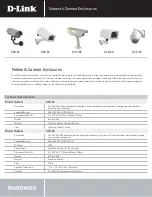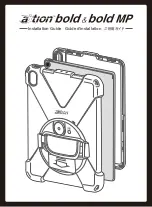
________________________________________________________________________
XDI200 Manual Version 0.1
- Page 13 -
©2017 Electromotive, Inc.
be used for trigger wheels less than 4 inches. Hall effect sensors are preferred because they
have better noise rejection. However Hall Effect sensors require adding a +12V power lead to it.
Electromotive can supply both Magnetic and Hall Effect sensors.
Table 1:
Crank Trigger Specifications
Trigger
Wheel
Size
Air Gap
Maximum
Out-of-
Round
2.5"
0.025" max
0.002"
3.5"
0.035" max
0.003"
5"
0.050" max
0.005"
6"
0.060" max
0.006"
7.25"
0.070” max
0.007"
8.25"
0.080” max
0.008"
3.3.3 Crank Sensor Installation
When installing the crank sensor, an appropriate bracket must be made to aim the sensor
at the trigger wheel. A good starting point for a magnetic sensor bracket is Electromotive part
number 210-72003, which is our universal sensor bracket (
See Figure 3
). If this part is not used
as a starting point, a custom bracket can easily be made.
The most important things to
remember when fabricating a bracket are that it should be bolted directly to the engine
block, away from rotating steel or magnetic pieces, and should be nonferrous (not
attracted to magnets).
This will keep the sensor and
trigger wheel vibrating together so the gap between the
two always stays the same. Variations in sensor gap
may cause erratic timing or false triggering of the
ignition. (This is the reason for not mounting the trigger
wheel to the outer ring of a harmonic damper.) As such,
any custom magnetic sensor bracket should be very
rigid. The sensor can be secured with either a set screw
or a clamping arrangement, as long as the
1/2” sensor is utilized (part number 250-72218). If the
smaller 3/8” sensor is used, a clamping arrangement
should be employed rather than a setscrew, as the
setscrews may crush the sensor. Hall effects sensors
are only available in ½” diameter. See
Table 2
for the
appropriate magnetic sensor/trigger wheel combinations.
Once a sensor and trigger wheel are installed, they must be aligned such that the
XDI200
computer knows where to locate Top Dead Center of the #1 cylinder (referred to as TDC #1).
Correct alignment necessitates that the center of the sensor must be aligned with the
trailing edge of the 11
th
tooth after the two missing teeth when the engine is at TDC #1 (see
the drawing at the end of this section).
Aligning the magnetic sensor with anything other than
the 11
th
tooth will cause an ignition timing retard or advance, depending on the direction of the
misalignment. Each tooth represents six degrees, so if the sensor is aligned with the trailing edge
of the 12
th
tooth, the timing will be advanced by six degrees. Conversely, if the sensor is aligned
Figure 3.
Universal Crank
Sensor Bracket














































